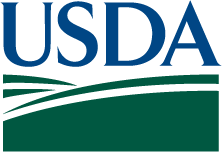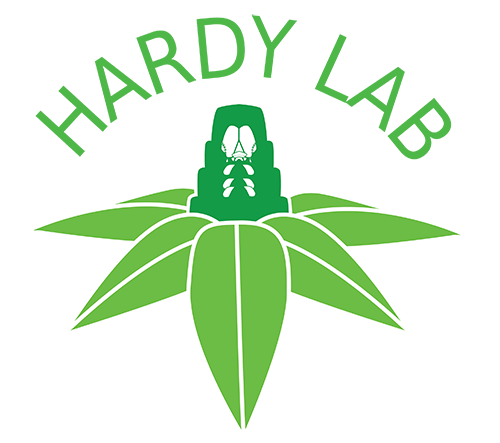Valid Names Results
Nidularia Targioni Tozzetti, 1868 (
Kermesidae)
Nomenclatural History
- Nidularia
Targioni Tozzetti
1868: 727.
Type species: Coccus pulvinatus Planchon
by subsequent designation
Signor1875b:17
.
(= Nidularia pulvinata, (Planchon, 1864) )
accepted valid name
Notes: The genus Nidularia originally included three species Nidularia pulvinatus (Planchon)Nidularia lanigera (Gmelin)(=Eriococcus spuria), and Nidularia gramuntii(Planchon)(=Eriococcus spuria(Modeer)). Since the work of Signoret in 1875b, N. pulvinatus has been considered to be the type species of Nidularia with the exception of the work of Lindinger (1933a). In the paper by Lindinger, Querceticoccus is considered to be the valid genus for N. pulvinatus. Lindinger asserted that the first species named by Targioni Tozzetti (N. gramuntii) must be accepted as the type species, and Nidularia must replace both Gossyparia and Eriococcus. We here accept current usage of Nidularia with Coccus pulvinatus(Planchon) as the type species of Nidularia.
- Pulvinata
Signoret
1875b: 16.
.
unavailable name that is placed
Notes: This apparently is a lapsus for Nidularia Targioni Tozzetti. There was no species associated with this genus so it has no standing (Morrison & Morrison, 1966).
- Querceticoccus
Lindinger
1933a: 117.
.
replacement name that is unjustified
(discovered by MorrisMo1966: 171)
- Quercetococcus
Lindinger, 1933;
Lindinger
1943b: 264.
.
emendation that is unjustified
(discovered by MorrisMo1966: 171)
Remarks
- Systematics: Morrison & Morrison (1966) stated that Nidularia should be assigned close to Kermes Boitard, but the genus has been included in the Eriococcidae by Hoy (1963) and others. Bullington & Kosztarab (1985) and Baer & Kosztarab (1985) both consider this genus to belong in the Kermesidae as do Longo et al. (1995). Morrison & Morrison (1966) give the following information on the status of the genus "The author established this genus with a brief descriptive note and three associated species. Signoret, l.c., restricted the genus to pulvinatus, the second of these species, and it stood unquestioned as type-species of Nidularia for nearly 60 years. Lindinger, 1933a: 107-108, asserted that the first species named by Targioni-Tozzetti, the species currently called Gossyparia spuria (Modeer), must be accepted as type-species, and Nidularia must replace both Gossyparia Signoret and Eriococcus Targioni-Tozzetti of current usage. For the complex that had been known in literature as Nidularia, he proposed to substitute the name Querceticoccus. We believe that the Signoret, 1875, restriction of Nidularia constituted an effective type species establishment and that Lindinger's subsequent changes were not legitimate. On the basis of Marchal's redescription of the type-species, 1908: 259, it appears that Nidularia can assign close to Kermes Boitard."
- Structure: The main diagnostic character for separating adult female Nidularia from those of Kermes is that Nidularia spp. have microtubular ducts on entire dorsum while Kermes spp. do not. Another differencevis the presence of ventral, submarginal rows of both quinquelocular and bilocular pores within the submarginal band of tubular ducts in Nidularia. Most Kermes species lack these pores, although K. echinatus, K. hermonensis and K. vermilio (Pellizzari et al., 2012) are exceptions because they have a line of bilocular pores, but lack quinquelocular pores, within the submarginal band of tubular ducts on the venter. Nidularia spp. are distinguished from K. echinatus, K. hermonensis and K. vermilio by the lack of conical dorsal setae and the lack of tubular ducts on the dorsum. (Spodek & Ben-Dov, 2014),
- Biology: Nidularia spp. are monophagous and develop on oak trees. They are known as ‘gall-like insects’ due to the size and body shape of the convex and sclerotized post-reproductive adult female (Kosztarab and Kozár, 1988). They mainly develop in bark crevices, forks between small twigs and buds, and on branches (Bullington and Kosztarab 1985)
Keys
- MoghadWa2024: pp.141
(
Adult (F)
)
[Genera of Kermesidae in Iran]
- Hodgso2020: pp.153-154
(
Adult (M)
)
[Kermesidae]
Associated References
- Balach1942:
taxonomy, pp. 42
- Balach1948b:
taxonomy, pp. 254
- Borchs1948:
taxonomy, pp. 501
- Borchs1949:
taxonomy, pp. 43
- Borchs1959:
taxonomy, pp. 164
- Cocker1894v:
distribution, taxonomy, pp. 1050
- Cocker1896b:
taxonomy, pp. 324
- Cocker1899m:
taxonomy, pp. 276
- Fernal1903b:
distribution, taxonomy, pp. 66
- Ferris1957c:
description, taxonomy, pp. 87
- GomezM1937:
description, taxonomy, pp. 8, 9, 10, 323, 372
- GomezM1948:
taxonomy, pp. 96
- Hodgso2020:
key, pp. 153
- Hoy1962:
distribution, taxonomy, pp. 11, 13, 201, 202
- Hoy1963:
catalog, distribution, host, pp. 171-172
- Kawai1980:
taxonomy, pp. 131
- KosztaBu1987:
taxonomy, pp. 25
- Koteja1974:
taxonomy, pp. 296
- Koteja1980b:
description, taxonomy, pp. 589
- Koteja1988d:
taxonomy, pp. 533
- KozarDr1998h:
catalog, distribution, taxonomy, pp. 414
- KozarWa1985:
catalog, distribution, pp. 76
- Leonar1920:
taxonomy, pp. 469
- Lindin1933a:
taxonomy, pp. 107-108
- Lindin1937:
taxonomy, pp. 178, 180, 184, 186,190
- Lindin1943a:
taxonomy, pp. 147
- Lindin1943b:
taxonomy, pp. 206, 223
- Lindin1957:
taxonomy, pp. 543, 551, 552
- LongoMaPe1995:
taxonomy, pp.
- MacGil1921:
taxonomy, pp. 132
- Marcha1908:
taxonomy, pp. 259
- McConn1954:
taxonomy, pp. 23
- MillerGi2000:
catalog, taxonomy, pp. 477
- MorrisMo1966:
taxonomy, pp. 134
- Schmut1952:
taxonomy, pp. 406
- Signor1875b:
description, distribution, taxonomy, pp. 17
- SpodekBe2012:
distribution, host, pp. 12
- SpodekBe2014:
description, structure, pp. 79
- SpodekBeGh2012:
description, distribution, host, life history, taxonomy, pp. 24-25
- Targio1868:
taxonomy, pp. 727
3 Species


